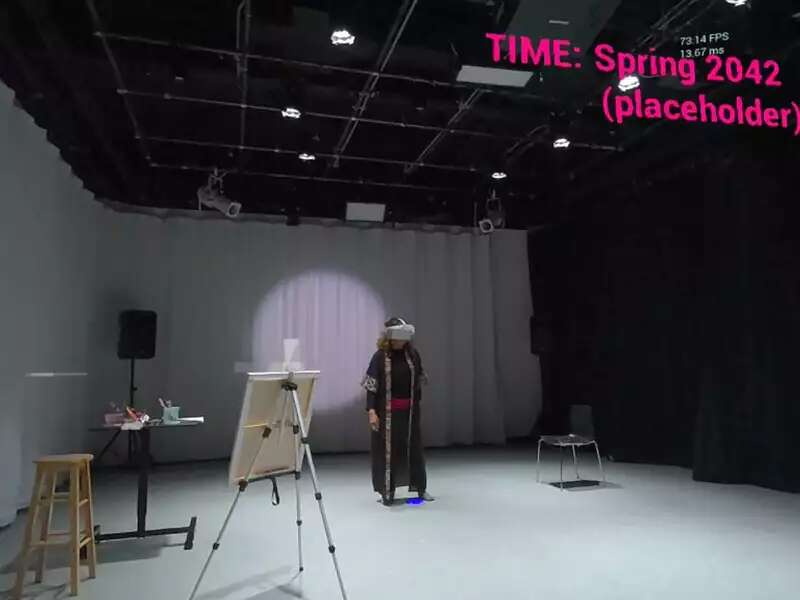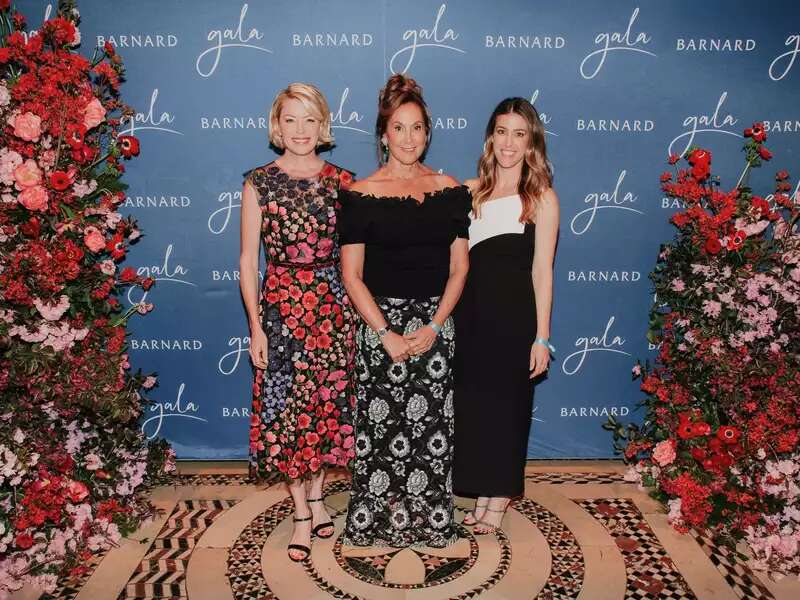Above: Professor Rae Silver and Alana Taub '18 share a high five in the Silver Lab.
When Alana Taub ’18 transferred to Barnard as a junior in 2016, she was behind in her science track but quickly caught up. To gain the lab experience she needed to pursue her major, Taub volunteered as an undergraduate researcher in the Morishita Lab at Mount Sinai Hospital from October 2016 to May 2018, where she spent up to 20 hours per week during the school year and about 40 hours per week during breaks, gaining the experience and research she needed to pursue her major in neuroscience and behavior. In the summer of 2017, Taub participated in Barnard’s Summer Research Institute (SRI), which provides funding and mentorship for STEM students to conduct research over the summer.
Taub’s interest in studying the brain began when she was very young. “The brain is such a complex organ and contributes so much to who we are as a person,” Taub explains. “However, so much remains to be discovered and understood.” After two eventful years of research, Taub graduated from Barnard in 2018 with a degree in neuroscience and behavior.
One week after graduation, Taub joined the Silver Lab, led by Rae Silver, Barnard’s Helene L. and Mark N. Kaplan Professor of Natural & Physical Sciences, where she continues to work today. In the lab, Taub uses microscopy, real-time imaging, and mathematical modeling to better understand the three-dimensional structure of “phaseoids,” a newly discovered intermediate structure in the suprachiasmatic nucleus. She is mostly focused on the microscopy data but also coordinates and organizes the data between the mathematicians and neuroscientists. “With such large data files and collaboration across different time zones, efficient organization is key,” said Taub.
As an aspiring physician, Taub looks forward to applying all she’s learned from the lab to her studies in medical school. “I am currently applying to medical school, and I know that thoughtful scientific inquiry, resilience following setback, organization, and team collaboration are all qualities future physicians should possess,” said Taub.
To learn more about Taub’s research, read her “Research Reflections” in the Q&A below.
How would you describe your research discovery to a lay audience?
We are looking at a small subset of cells within the suprachiasmatic nucleus (SCN), a small structure in the hypothalamus of the brain responsible for coordinating circadian rhythms. Circadian rhythms are behaviors that occur in about a 24-hour cycle, such as awake versus asleep, hunger or thirst versus satiety, etc. The SCN is composed of approximately 20,000 cells, and in this paper, we look at small clusters of neurons that form intermediate structures, termed “phaseoids.” These phaseoids can be identified by local differences in phase, which are distinct from the global phase relationship. A comparable analogy would be to imagine if each cell in the SCN had a clock [and that] most cells in the tissue stated the time was 6 p.m. But [imagine if] instead, a few cells would think the time was noon. The cells that agree that the time was noon are the cells of interest in this experiment. If these cells were located near one another, we could term these intermediate structures phaseoids.” We analyzed cells in the SCN and determined if they were phaseoids using three techniques: microscopy, real-time imaging, and mathematical modeling.
What was your role?
My primary role for this project was to focus on the microscopy data. We wanted to figure out the best time of day to see these phaseoids, so we performed immunohistochemistry for PER2 — a protein that changes from low to high and then returns to low levels throughout the day. From these images, we could see that these phaseoids are most visible a few hours after the majority of the cells express a high level or peak in expression. Additionally, I helped to coordinate and organize the data between the other co-authors, mathematicians and neuroscientists, to ensure everyone was identifying the correct slices and cells in the proper orientation. With such large data files and collaboration across different time zones, efficient organization was key.
Why is it important to study this topic?
The SCN is an extremely small yet powerful structure of the brain. It is able to coordinate rhythms occurring on time scales varying from daily to seasonal to an annual basis. Characterizing how the SCN is able to coordinate such complex behaviors is important for laying the foundation for circadian studies. Why are these phaseoids lagging behind the general population of the SCN, and how do they communicate amongst themselves? Furthermore, we studied the tissue slices in three orientations — coronal, horizontal, and sagittal — but found, interestingly enough, that the phaseoids were only able to be identified in two orientations. However, many people study the SCN in the coronal, in which the phaseoids were not found. Therefore, it is important to consider orientation specificity in future studies.
The brain is such a complex organ and contributes so much to who we are as a person. However, so much remains to be discovered and understood.
Who has been your biggest influence in STEM?
There are many people who have influenced my thinking about research. For instance, I would like to thank my mentor Lucy Bicks, Ph.D., in the Morishita Lab, [along with] principal investigator Hirofumi Morishita, Ph.D., M.D., for taking me on as an undergraduate volunteer. Under their guidance, I learned the tissue handling and microscopy techniques required for this project. Additionally, by sitting in lab meetings or journal club meetings, I learned the importance of asking clarifying questions. This was very important when coordinating between neuroscientists and mathematicians to ensure we were all on the same page about the particular groups of cells or brain orientations. Most recently, since joining Rae Silver’s lab, I am grateful for the mentorship provided by her and Joe LeSauter [a senior research scientist at Barnard College]. They are [each] well versed in potential interesting pathways for future directions and have ideas for how to troubleshoot when things go wrong, [as a result of their] many decades in circadian research.
What’s the next step for this research?
We are looking to pursue more information about the 3D structure of these phaseoids. What do they look like in three-dimensional space? The published research has taken the SCN and sliced it. The best analogy is taking a banana and slicing it. In this study, we only studied the pieces individually. But now we want to look at the entire SCN structure, or the entire banana. We are currently performing different techniques to achieve this goal.
—MAYA GILBERT ’22



